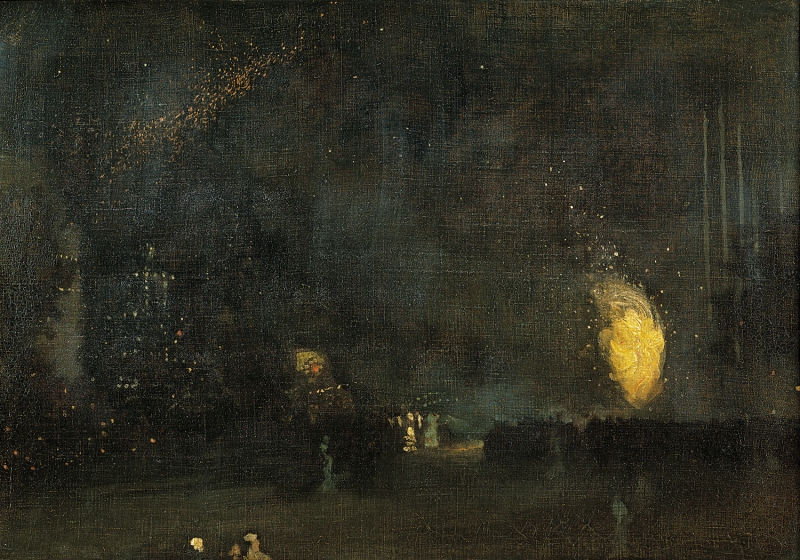Nocturne: Black and Gold – The Fire Wheel dates from between 1875 and 1877. 1
Whistler's earliest night scenes, painted 1870-1872 and first exhibited as 'moonlights', were renamed 'nocturnes' by 1872. Whistler painted nocturnes throughout the 1870s.
In 1875 he mentioned to Frances Leyland (1834-1910) 'another couple of Nocturnes hang on the walls that even you would I think acknowledge to be beautiful.' 2 On 18 September 1875, Whistler's mother, Anna Matilda Whistler (1804-1881), explained, 'his Moonlight pictures are from his own look out on the Thames, & one lately finished of Cremorne Gardens at Chelsea.' 3 Cremorne pleasure gardens closed to the public in 1877.
Whistler's paintings of Cremorne include this painting, Nocturne: Black and Gold – The Fire Wheel, as well as Cremorne, No. 1 [YMSM 163], Cremorne Gardens, No. 2 [YMSM 164], Nocturne: Cremorne Gardens, No. 3 [YMSM 165], Nocturne in Black and Gold: The Gardens [YMSM 166], Nocturne in Black and Gold [YMSM 167], and Cremorne [YMSM 168], as well as the famous – and controversial – Nocturne in Black and Gold: The Falling Rocket [YMSM 170].
Last updated: 20th May 2021 by Margaret






